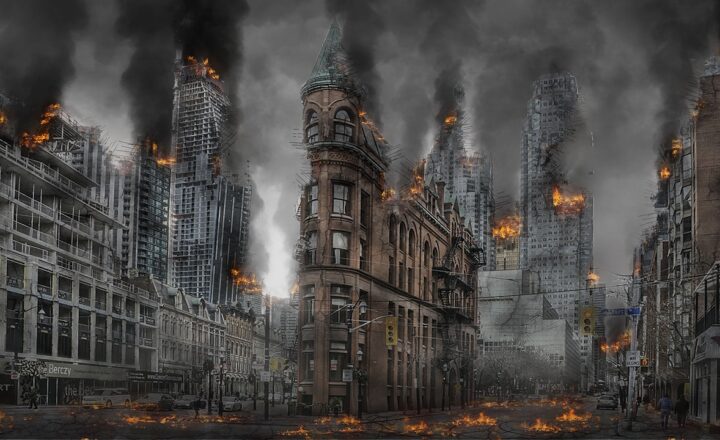
Al Capone, a name synonymous with the American organized crime scene, has left an indelible mark on history through his notorious exploits during the Prohibition era. Known as “Scarface,” Capone’s life is a compelling tale of power, wealth, and eventual downfall that continues to capture the imagination of many.
In this article, we will explore the fascinating journey of Al Capone, from his humble beginnings to becoming one of history’s most infamous mobsters, and ultimately, his decline and legacy.
1. Early Life and Rise to Power
Alphonse Gabriel Capone was born on January 17, 1899, in Brooklyn, New York, to Italian immigrant parents. Growing up in a poor neighborhood, Capone learned the ins and outs of street life at an early age.
His journey into organized crime began as a teenager when he joined a local gang known as the Five Points Gang. Here, he quickly rose through the ranks, engaging in various criminal activities including theft and illegal gambling.
Capone’s significant turn came when he moved to Chicago in 1919. The city’s underworld was rife with violence and corruption, and numerous gangs were vying for power. He initially worked for Johnny Torrio, a major mob boss who took Capone under his wing. When Torrio was nearly assassinated in 1925, he handed over control of the Chicago Outfit to Capone, marking the beginning of Capone’s reign.
2. The Prohibition Era and Organized Crime
The 18th Amendment, passed in 1920, prohibited the sale, manufacture, and transportation of alcohol in the United States. This led to a significant boom in organized crime as illegal speakeasies and bootlegging operations flourished. Capone saw this as an opportunity to make a fortune.
With a mix of charm and brutality, Capone dominated Chicago’s illegal liquor trade, earning profits estimated at millions of dollars. His flamboyant lifestyle—marked by lavish parties, expensive cars, and tailored suits—made him a celebrity. However, behind the glamor was a violent and ruthless gang that eliminated rivals through intimidation and murder.
Notable events during this time included the Saint Valentine’s Day Massacre in 1929, where seven members of a rival gang were executed, allegedly under Capone’s orders. Although this event heightened public outrage and scrutiny towards him, it also solidified his power within Chicago’s criminal underworld.
3. Public Image and Law Enforcement Crackdown
Despite his criminal activities, Capone adopted a Robin Hood-like persona, often donating to charities and providing for the poor. This strategy earned him substantial public support and helped shield him from scrutiny. Still, law enforcement agencies, including the Chicago Police and the federal government, were determined to bring him down.
The Bureau of Prohibition and the FBI, under the leadership of J. Edgar Hoover, began investigating Capone’s operations. However, they struggled to secure solid evidence against him due to his corruption of local law enforcement and the difficult nature of prosecuting organized crime.
The turning point came when the IRS began pursuing Capone for tax evasion in the early 1930s. They meticulously gathered evidence, demonstrating how Capone made a fortune without reporting his income.
4. The Downfall: Arrest and Conviction
In 1931, after years of evading law enforcement, Al Capone was finally indicted for tax evasion. The trial, which garnered nationwide attention, showcased Capone’s lavish lifestyle and revealed the extent of his criminal empire. He was convicted and sentenced to 11 years in federal prison.
Capone’s time in prison was marked by a decline in health. Following his release in 1939, he struggled with syphilis and deterioration of his mental faculties. His once-feared reputation had diminished, and he retreated to his estate in Palm Island, Florida, where he spent his remaining years in relative obscurity.
5. Legacy and Cultural Impact
Al Capone died on January 25, 1947, at the age of 48. His life story has been adapted into numerous films, books, and television shows, cementing his legacy as a symbol of organized crime in America. Capone’s journey serves as a cautionary tale of how power can corrupt and lead to one’s downfall.
Today, he is often remembered not just for his criminal exploits, but also as a figure who influenced public perception of mobsters in media. His story raises intriguing questions about morality, violence, and the American Dream.
Conclusion
Al Capone’s rise and fall exemplify both the allure and dangers of power. His life was a complex interplay of ambition, crime, and infamous notoriety. Capone’s legacy continues to resonate in contemporary culture, reminding us of the darker sides of history and the ever-present tension between law and order. The story of Al Capone is not merely a tale of a mobster; it is a reflection of an era that shaped American society.
His narrative, filled with glamour and violence, remains relevant, exploring the intersections of crime, politics, and the fabric of American life. As we look back on his life, we are prompted to reflect on the moral complexities of fame, fortune, and the consequences of choices made.








